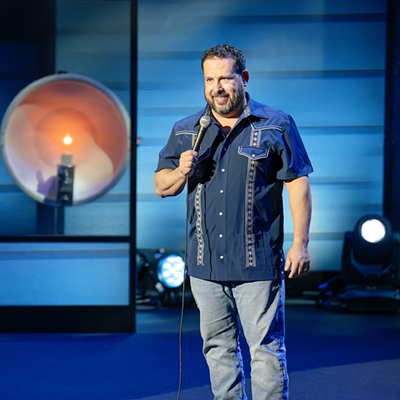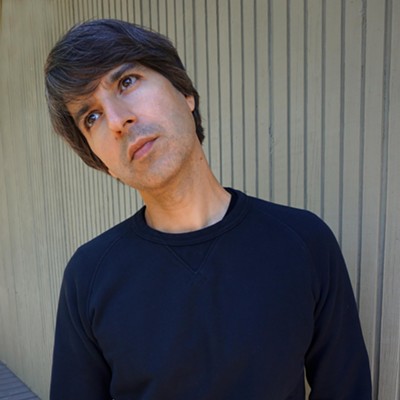Starting on Wednesday, Nov. 30, Tucsonans can peer into a world that's right around the corner—but rarely seen.
The Native Eyes Film Showcase—presented by the Arizona State Museum and the University of Arizona's Hanson Film Institute, in collaboration with the Smithsonian Institution's National Museum of the American Indian—will include more than 20 films that show aspects of native culture across the United States and beyond.
"If you have any preconceived idea of what native film is, you'll probably be surprised," said Vicky Westover, program director of the Hanson Film Institute. She notes that this year's showcase includes a film that examines the indigenous cultures of New Zealand, taking the festival to a global level.
The screenings will be held at the UA, as well as the Crossroads 6 Grand Cinemas. There also will be a screening on the Tohono O'odham Nation, at Baboquivari High School in Sells, where director Billy Luther will be on hand to discuss his newest film, Grab. The documentary chronicles the annual Grab Day celebration by the Laguna Pueblo tribe, when members toss food, water and other items from the rooftop of a home to people standing below. (The film was also recently part of the Loft Film Fest.)
"It's important for me to go to those communities to show these films. It's not just the youth who want to see the films, but the elders," said Luther, who is a member of the Laguna Pueblo tribe. "They can't always get in the car and drive an hour and a half to see these films."
Filming Grab Day was especially challenging, because film crews aren't often seen in the tribe's villages.
"It was a first," Luther said, "Getting access ... was extraordinary."
Access is often a challenge when filming in Native American communities, agreed Sande Zeig, director of Apache 8, which chronicles an all-woman crew from the White Mountain Apache Tribe that has been fighting fires across the country for more than 30 years.
"I was very blessed," said Zeig, who is not Native American, about being granted permission to film tribal members. "I got a lot of support from the firefighters; a lot of people agreed to be interviewed. I was extremely lucky to be supported. They don't allow a lot of films."
These two films, along with others in the showcase, show viewers powerful stories that have changed the lives of the filmmakers themselves.
"I was inspired by them," Zeig said. "I don't so much have a directorial voice: I want people to tell their own story. The Apache people are very strong, wise people."
Luther was also moved by his filmmaking experience. He said he thinks his film can teach native cultures a lot about each other.
"Even though they're different communities, even though it's not their tribe, I think a lot of other indigenous and native cultures and communities can identify and see parallels with their own lives, ceremonies and traditions," Luther said of Grab.
Westover said the quality of the films in the showcase "is really stellar. This year, they are more inventive and creative, and there's more diversity in genre."
Luther agreed. "There are so many different styles; there are so many different native filmmakers making films out there that are important—some serious, some hilarious," he said. "That's what I think the Native Eyes Showcase does; (organizers) curate these native films that are kind of all over the map in terms of styles and genres."
Luther thinks those genres will soon expand.
"I'm looking forward to seeing a Native American horror film or a Native American Sex and the City," he said. "They're going to be made. It's just a matter of time. There's a lot of talent out there."







